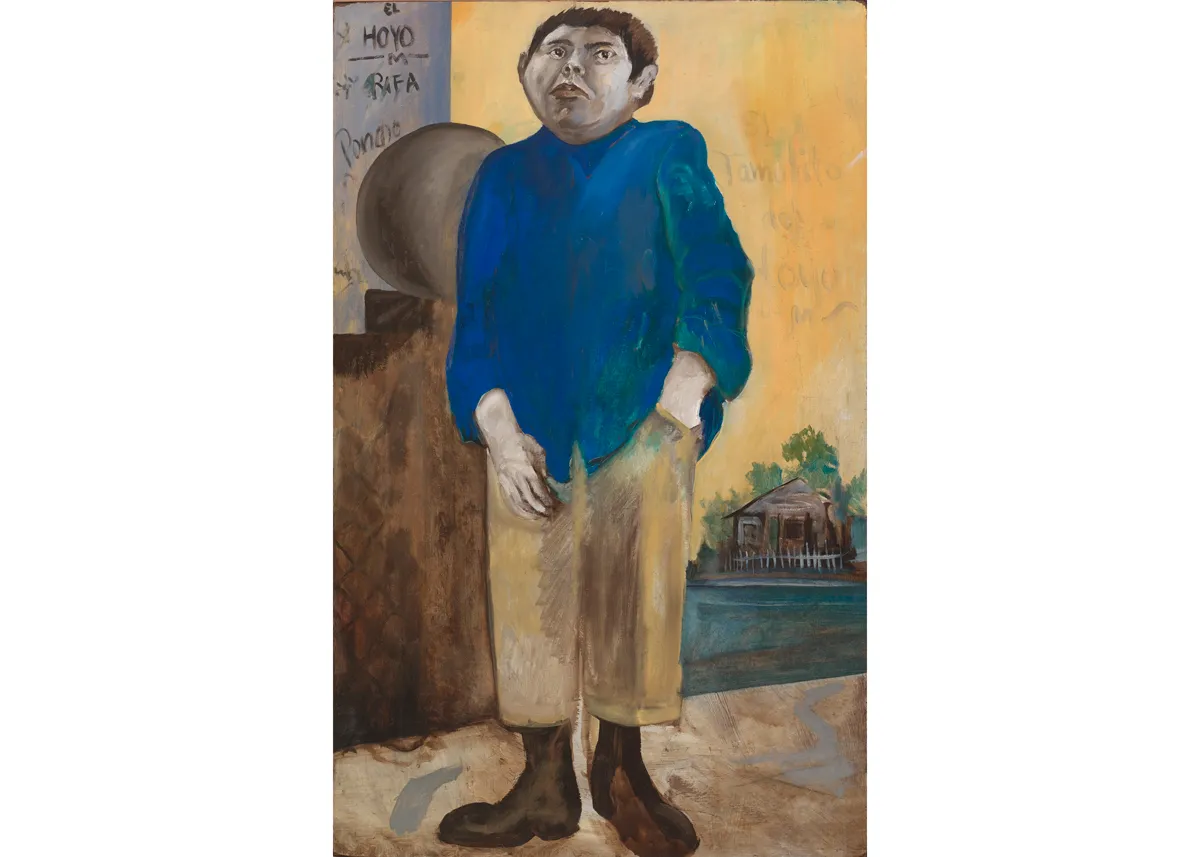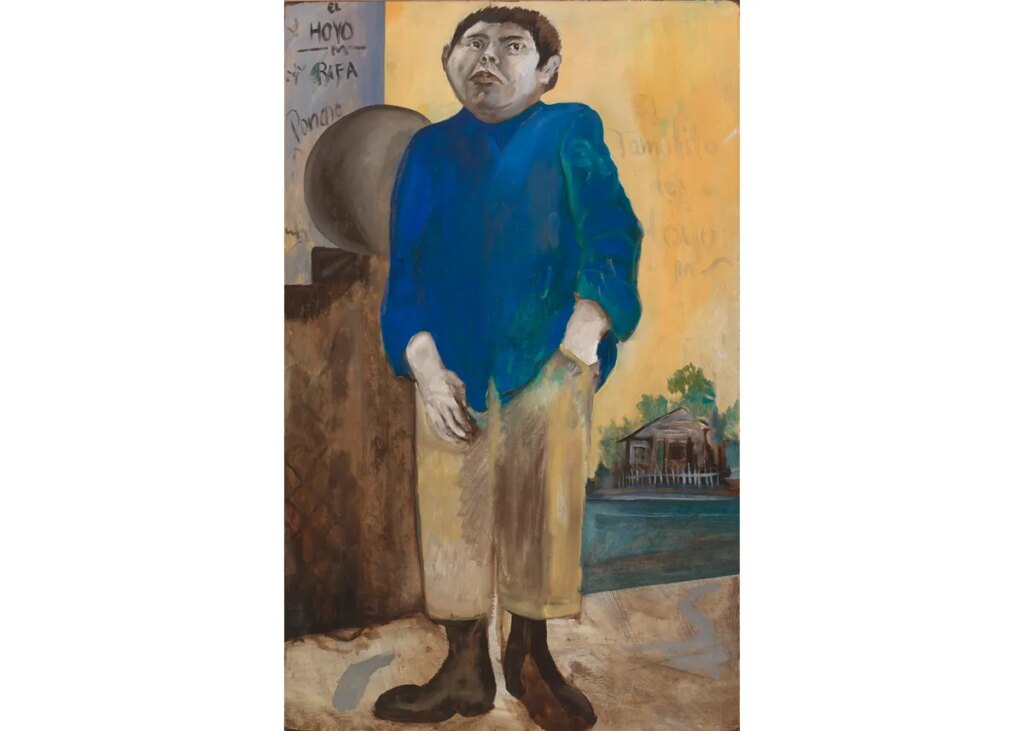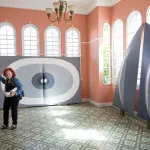
Roberto Chavez, a major figure within US Latinx art history whose work has influenced generations of artists that followed, died on December 17 of natural causes in Arivaca, Arizona. He was 92. The news was confirmed by the artist’s daughter, Sonna Chavez, in an email.
Chavez was part of a generation of Mexican American artists working in LA beginning in the early 1950s, before the Chicano Art Movement that they would come to influence. That cohort, including Chavez and five other artists, was the subject of a major exhibition, “Art Along the Hyphen: The Mexican-American Generation,” mounted by UCLA’s Chicano Studies and the Autry Museum in 2011 as part of the first edition of the Getty Foundation’s Pacific Standard Time initiative, which that year looked at LA art in the postwar era.
“Within this artistic environment, [these] Mexican American artists melds aesthetic and cultural influence into an artistic synthesis that would not only define them but also facilitate the flowering that would be the Chicano art movement of the late 1960s and 1970s,” Terezita Romo, a co-curator of “Art Along the Hyphen,” wrote in the accompanying catalog, L.A. Xicano. “However, the majority of these Mexican American artists have been all but erased from the mainstream art canon, rendered nonexistent within public art institutions and absent from art school curricula.”
His 1959 painting, El Tamalito del Hoyo, graced the cover of “Our America: The Latino Presence in American Art,” a groundbreaking 2013 exhibition at the Smithsonian American Art Museum in Washington D.C. The canvas shows a man in a blue shirt and yellow pants who stands in front of a graffiti walled, a small house with a white-picket fence seen in the distance.
“Tamalito, whose real name I never knew, was one of the vatos from ‘El Hoyo,’ the neighborhood directly west and north of where I hung out,” Chavez once told Romo of the painting. “In high school I realized that my contemporaries and our environment were what I most wanted to depict in my pictures and stories.”
The Smithsonian exhibition’s curator, E. Carmen Ramos, wrote that El Tamalito del Hoyo served “as Chavez’s homage to the often invisible residents of Los Angeles’s many Mexican neighborhoods.”
In addition to his paintings depicting the unseen parts of Mexican American and Chicano LA, Chavez also created several murals around the city, including one at the famed mural site the Estrada Courts public housing complex in Boyle Heights. The most famous one—and the most controversial—was The Path to Knowledge and the False University (1974–75), which he painted for an exterior wall of the auditorium of East Los Angeles College, where he was founding chair of its Mexican American Studies Department at the time. Measuring 30 feet by 200 feet and visible from the nearby 60 freeway, the mural was dense gathering of images and iconography that ranged from war tanks and military planes to Surrealist-inflected pyramids and a Cubist pile of canvases to floating bodies and fish.
The mural’s title refers to two of its main sections. The upper register visually translates the four obstacles to knowledge—fear, clarity, power, and old age—as written in Carlos Castaneda’s The Teachings of Don Juan. The lower section is more directly a condemnation of what Chavez called the “Chicano intelligentsia,” showing a representation of Laputa from Gulliver’s Travels, where “an elite group of people pursue esoteric and mindless activities—Chavez’s ‘false university,’” according to Romo.
The mural was the focus of a 2017 PST show, “¡Murales Rebeldes!: L.A. Chicana/Chicano Murals Under Siege,” which looked at murals in LA that had been whitewashed or destroyed. In the exhibition catalog, co-curator Jessica Hough wrote that the campus newspaper was especially critical of the mural, providing “evidence of the factions within the Chicana/o community at the time, the disappointment that the mural did not use more easily recognizable Chicana/o iconography, and the growing rift between ELAC faculty and administration, all of which ultimately led to the mural’s whitewashing.”
Decades later, Chavez recalled, “I know not everyone liked the painting. But when I did it, I tented it as a part of an educational environment in which the subject matter, the themes expressed, would raise questions in people’s mind.”
Roberto Chavez was born in Los Angeles in 1932 to parents who had migrated from Mexico to LA in the early ’20s, immediately following the Mexican Revolution. They settled in the Maravilla neighborhood of East LA. At an early age, he showed a predilection for art-making in both drawing and sculpture. “My first sculptures were adaption of breakage—of recycling materials into little toys,” Chavez told Romo in a 2010 oral history.
When he was in high school, Chavez decided he would become an artist after seeing a painting by Braque in the windows of the May Company department store in downtown LA. The work drew him in, and he saw work by other European masters, like Renoir. “It was like they were alive in a way that I may have imagined, but had not ever seen,” he said in the oral history about the paintings. “I knew that’s what I wanted to do. I wanted to make paintings that came alive.”
He first attended Los Angeles City College, enrolling in a commercial art program. His studies were interrupted by his military service during the Korean War between 1952 and 1954. Upon his return, with funds from the GI Bill, Chavez transferred to UCLA’s art department, where he studied with William Brice and John Paul Jones, who at the time were hailing the tenets of pure abstraction.
Chavez, however, chose a different path. His works were largely figural, although they incorporated abstract elements. Among the works made during his BFA studies, which he completed in 1959, is Masks (1957), showing children whose faces are obscured by Cubist masks.
In his art, he wanted “to trust the human image as a reflection of myself and of life. For I don’t always know what I am painting and revelation is as much a part of my painting as is fulfillment,” Chavez wrote for his master’s thesis, which he received in 1961 also from UCLA.
He would soon begin teaching extension classes at both UCLA and ELAC. Around this time, he reconnected with three artists with whom he had overlapped at UCLA: Eduardo Carrillo, Charles Garabedian, and Louis Lunetta. The four would soon become connected with Ceeje Gallery on La Cienega Boulevard, which opened in 1962, a year after the storied Ferus Gallery, which was just a few blocks down the street.
In a 1962 Artforum review of a four-person exhibition dedicated to Chavez, Carrillo, Garabedian, and Lunetta, artist Arthur Secunda wrote, “[T]his ensemble makes up the most exciting, fiercest, most vital debut of any art gallery opening here within recent memory. … I hope the boys up and down the street take note.”
Among the works Chavez showed was The Group Shoe (1962), a portrait of the four exhibiting artists who all look in different directions, seemingly avoiding eye contact with a lone brown boot that rests on the edge of a yellow-cream table. (The painting’s title deliberately puns the phrase “the group show.”) Chavez would receive his first solo show at Ceeje later that year and show with the gallery until 1965.
In 1969, Chavez would be hired as a full-time professor at ELAC, a joint appointment between the art and Mexican American Studies (later renamed Chicano Studies) departments. His tenure directly overlapped with the height of the political activism of the Chicano Movement, with ELAC serving as a major locus for this activity.
Despite being founding chair of the Mexican American Studies department and being commissioned to paint a mural for the campus, Chavez resigned from his post in 1981, two years after the college whitewashed his mural. He subsequently moved to Fort Bragg, in Northern California, for several years. His 1982 film, The Execution, serves an artistic response to the emotions Chavez felt in the wake of the mural’s destruction.
But that experience never made Chavez stray from his dedication to painting and his belief in its power. In a 2011 essay titled “Why Paint?,” published by Aztlán: A Journal of Chicano Studies, Chavez wrote, “Art helps us feel comfortable with experiences that give us a sense of what an incredible thing it is to be alive as humans in this awesome and beautiful place.”
He added, “You could say that I paint to discover what painting is.”


